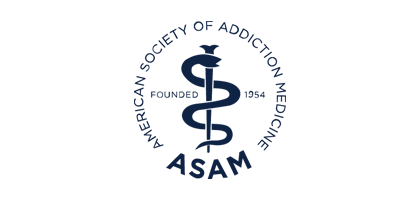Public Policy Statements
Morphine Equivalent Units/Morphine Milligram Equivalents
Background
The Centers for Disease Control and Prevention’s (CDC) Guideline for Prescribing Opioids for Chronic Pain recommends clinicians prescribe the lowest effective opioid dosage when a patient begins opioid therapy for chronic pain.i It elaborates on this recommendation as follows:
Clinicians should use caution when prescribing opioids at any dosage, should carefully reassess evidence of individual benefits and risks when considering increasing dosage to ≥50 morphine milligram equivalents (MME)/day, and should avoid increasing dosage to ≥90 MME/day or carefully justify a decision to titrate dosage to ≥90 MME/day.
CDC justifies this recommendation by noting that the benefits of high-dose opioids for chronic pain are not established, but that risks for serious harms related to opioid therapy increase at higher opioid dosage. Specifically, the Guideline notes that most experts generally agreed that increasing dosages to 50 or more MME/day increases overdose risk without necessarily adding benefits for pain control or function. Key to this recommendation is the underlying premise that opioids are being used to treat chronic pain, and accordingly, benefits were assessed in terms of pain control and function and harms evaluated in terms of overdose risk.
Importantly, the benefits and risks of using opioids to treat addiction involving opioids (either methadone or buprenorphine) should be evaluated differently, as chronic pain and addiction are two different biological illnesses. Both methadone and buprenorphine have been demonstrated to decrease overdose risk when used to treat addiction involving opioids. Further, both methadone and buprenorphine treatment have been demonstrated to improve outcomes, including increasing treatment retention and reducing frequency of opioid useii, risk behaviors that transmit HIViii and hepatitisiv, criminal activityv, and mortalityvi. Increasing access to these treatment options for patients with opioid addiction has been recommended as a key strategy to reduce opioid overdose deaths.vii
Equally as important, recommended dosages of methadone and buprenorphine when used to treat addiction involving opioids differ from recommended dosages for pain treatment. The ASAM National Practice Guideline for the Use of Medications in the Treatment of Addiction Involving Opioid Use notes that, while a relatively low dose of methadone (e.g., <30 mg per day) can lessen acute withdrawal, it is often not effective in suppressing craving and blocking the effects of other opioids.viii Most patients fare better if their initial 30–40 mg per day dose is gradually raised to a maintenance level of 60–120 mg per day. Indeed, multiple randomized trials have found that patients have better outcomes, including retention in treatment, with higher doses (80–100 mg per day) than lower doses.
Regarding buprenorphine, the ASAM Guideline recommends that buprenorphine doses after induction and titration should be, on average, at least 8 mg per day. However, if patients are continuing to use opioids, consideration should be given to increasing the dose by 4–8 mg. The US Food and Drug Administration (FDA) approves dosing to a limit of 24 mg per day. There is some evidence regarding the relative efficacy of higher doses.
Converting these recommended dosages to morphine milligram equivalents (MME) (also known as morphine equivalent units (MEU)) reveals that they exceed the CDC recommendations regarding MME for chronic pain. The recommended 60-120 mg of methadone per day becomes 600 – 1,440 MMEix; the recommended range of 8-16mg buprenorphine becomes 80-160 MME.x CDC specifically excludes buprenorphine from its MME table because it is not likely to be associated with overdose in the same dose-dependent manner as are pure opioid agonists.
This disparity may cause confusion among policymakers and payers attempting to set policies to prevent opioid overdose by limiting MME, as well as among state medical board officials attempting to enforce clinical guidelines and stem the over-prescription of opioid analgesics. However, applying the CDC-recommended MME thresholds to methadone and buprenorphine when used to treat addiction is problematic. Given its stated scope, the CDC Guideline recommendations were not intended to apply to these medications when used to treat addiction involving opioids. Its recommended thresholds conflict with methadone’s and buprenorphine’s clinically recommended and FDA-approved dosages. Applying MME thresholds designed to minimize overdose-related harm caused by opioids prescribed for chronic pain to opioids used for addiction treatment would have a perverse effect of limiting addiction treatment effectiveness and potentially increasing opioid overdose deaths.
Recommendations
Considering these facts, the American Society of Addiction Medicine recommends:
- When used for the treatment of addiction, methadone and buprenorphine should be explicitly excluded from legislation, regulations, state medical board guidelines, and payer policies that attempt to reduce opioid overdose-related mortality by limiting milligram morphine equivalents (MME). Higher MME of these medications are necessary and clinically indicated for the effective treatment of addiction involving opioid.
- State medical boards should not use MME conversions of methadone or buprenorphine dosages used in addiction treatment as the basis for investigations or disciplinary actions against prescribers.

